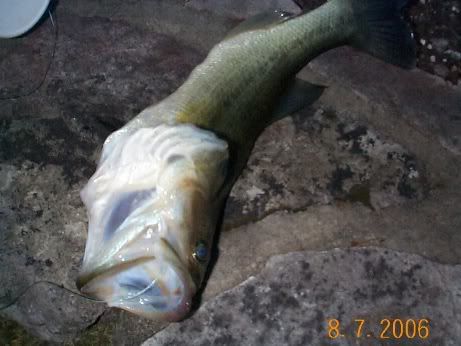Thanks Dr. Dave.
I had first noticed this with LMB two or three years ago and didn't quite realize what was going on. This guy had a plastic worm in his tummy when I opened him up.

A few weeks later, I got another very skinny LMB that had a white plastic grub in its stomach. The consequences finally hit me when Lusk wrote about it, but I still didn't fully comprehend the problem. The presentation at last year's convention finally hammered it into my brain.
As I was listening to the presentation, I envisioned the furry and toothy critter that tore into the "fishing purse" I'd left hanging at the end of my dock. I could just see him ripping open all my bags of soft plastics, and letting them drop into the pond -- except for those that must have given him a heck of a bellyache.
After last year's convention I pretty much swore off using soft plastics and GULP products in the pond. But, last fall I finally threw them all out after I found that my chickens had snuck (sneaked??) into the shed where I keep my fishing equipment. They were ripping at several bags of soft plastics. I'm not sure what would have happened to the chickens had they eaten a bunch of soft plastics.
For now, our pond rules just keep growing:
- No GULP- No treble hooks
- No soft plastics- Keep every crappie
- Never fish with pellets
- No hooks smaller than #6
- Keep all CC over 20 inches
- Keep all LMB over 15 inches
- No glass bottles near the pond
- No fishing near active BG nests
- Never fish where you just threw the pellets
- NEVER keep a female BG over 9 inches, unless seriously wounded
- NEVER keep a male BG over 10 inches, unless seriously wounded
- Take all other BG
Good fishn'
Ken